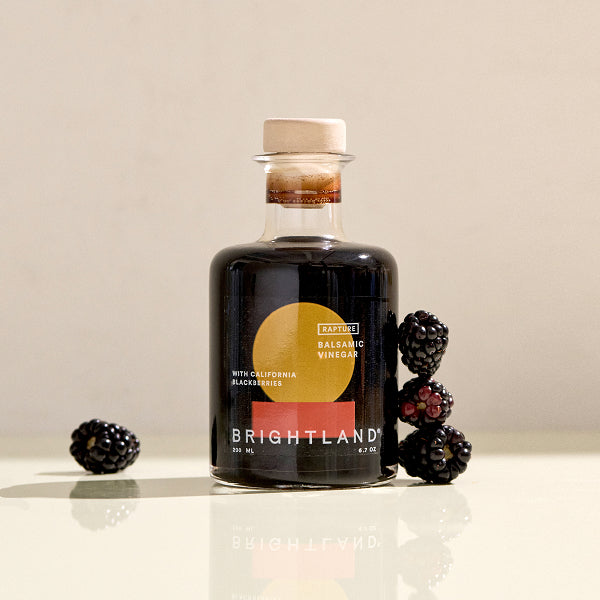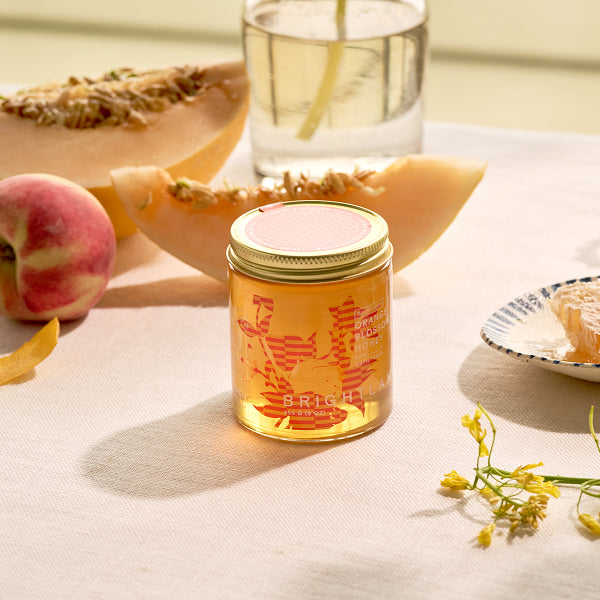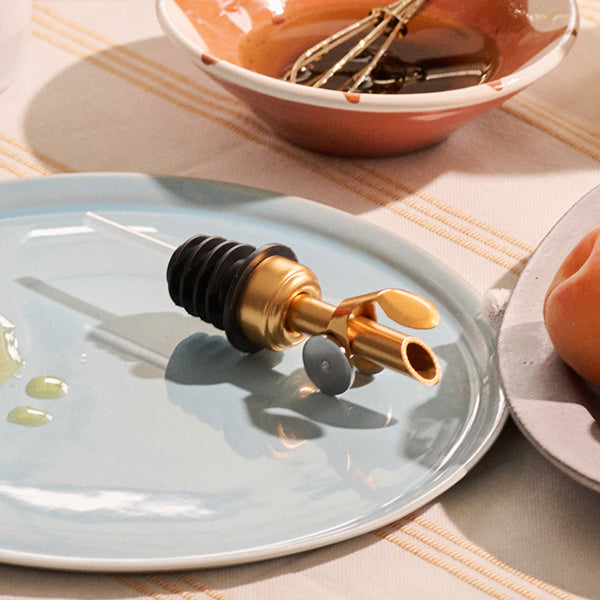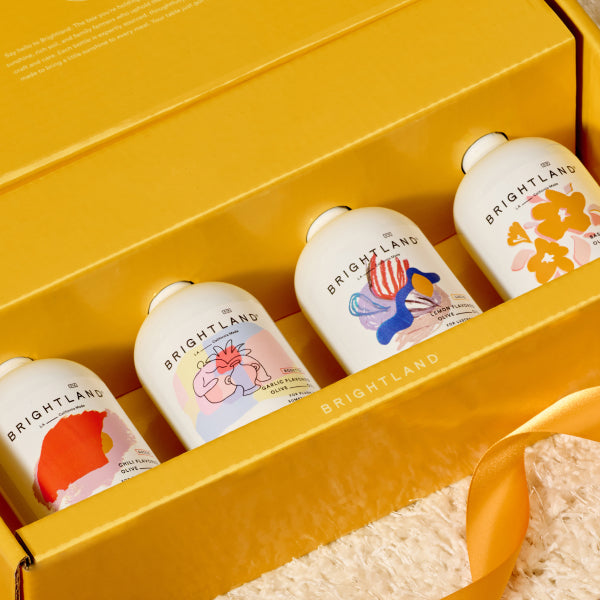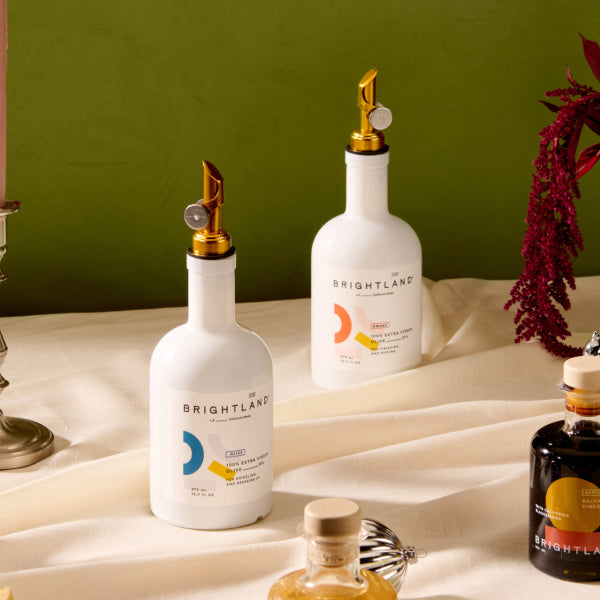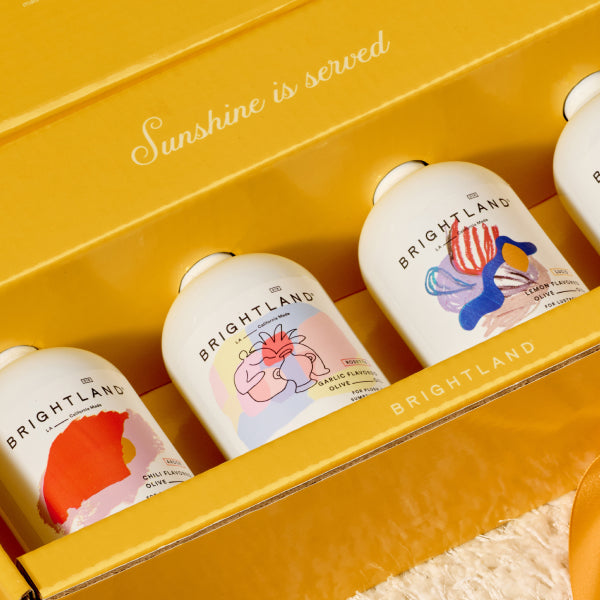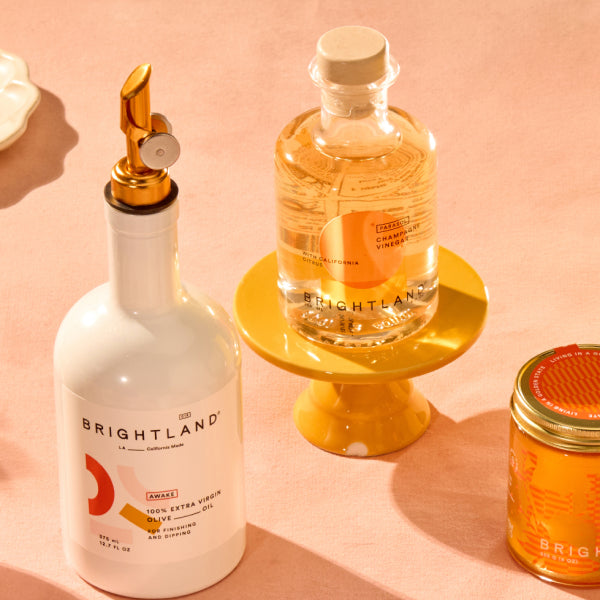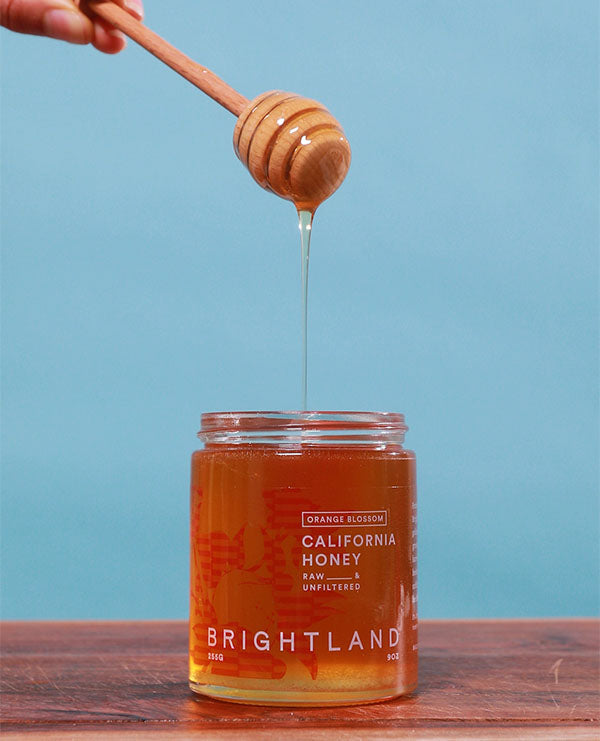[open type="images" count="1"]

[close type="images"][open type="rte"]
If you thought there was only one type of honey that just came in differently shaped bottles, think again! There are quite literally dozens of honey varieties out there, and various versions of each variety, too. In this ultimate guide, we explain how to decode a raw honey label and then discuss the 14 most popular honey varieties that you need to know about in order to choose the best type of honey for your needs.
[close type="rte"][open type="rte"]
Types of Honey Labels
First, we want to give a quick overview of terms that you might see on honey labels, regardless of the type of honey that you are buying. Understanding these additional qualifiers will help ensure that you are actually buying the type of honey that you think you are and help you make the best decision possible.
- Raw honey: This refers to honey that has not been filtered or pasteurized and thus contains the highest levels possible of flavorful and nutritious pollen.
- Unfiltered honey: This is sometimes used as a synonym for raw honey, but more often it is used to refer to honey that has not been filtered.
- Organic honey: Technically, organic honey means that the bees only pollinated organic flowers. In practice, it is impossible to track the behavior of every bee that contributes to a honey jar, so this is more of a marketing term than a meaningful designation.
- GMO-free honey: Similar to organic honey, this technically means that the bees only pollinate plants that have not been genetically modified. Again, this is impossible to guarantee or enforce, so it’s more of a marketing term than anything else.
- Pure honey or genuine honey: This term should mean that the bottle only contains 100 percent honey and has not been adulterated with corn syrup, sugar or another ingredient. However, there is no governing body that enforces the use of this term, so always read the fine print under the ingredients label on the back to make sure that you are actually buying 100 percent honey.
- Single source honey: This means that the honey was made by pollinating only a single species of plant.
- Multi-flower honey: This means that the honey was made by pollinating multiple species of plants.
[close type="rte"][open type="images" count="1"]

[close type="images"][open type="rte"]
[close type="rte"][open type="rte"]
Types of Honey
Different kinds of honey taste different depending on what plants were pollinated in the making of the honey. Here are 14 types of honey that you need to know before you make your next honey purchase:
[close type="rte"][open type="rte"]
Manuka honey
Manuka is renowned for its healing properties, but it actually tastes delicious as well. It originates from New Zealand, where bees pollinate the flowers of the tea tree bush — and, yes, that is the same plant that is responsible for the ever-popular tea tree oil. Similar to tea tree oil, genuine manuka honey has a distinct taste and smell that sets it apart from other honey. Due to the honey’s popularity and small supply, a lot of knockoffs exist in the market so carefully vet any suppliers before purchasing so-called genuine manuka honey.
[close type="rte"][open type="images" count="1"]

[close type="images"][open type="rte"]
Clover honey
Clover honey originally came from New Zealand and Canada, but today it is the most common honey that is grown and harvested in the United States, thanks to the way that the clover plant flourishes here. The honey has that classic amber color and offers up a sweet flavor that is sometimes followed by a slightly sour aftertaste. Clover honey falls on the lighter, milder end of the spectrum, making it a versatile option to add to your pantry.
[close type="rte"][open type="rte"]
Orange blossom honey
Another popular honey in the U.S., orange blossom honey originated in Spain and Mexico but also does well anywhere that citrus fruits can grow, such as in Florida and California. Similar to clover honey, orange blossom honey is on the lighter and sweeter side, with a subtle fruity undertone that reveals its citrus origins and adds a little something extra. We chose orange blossom as one of the two options for our honey duo set because of its universal appeal and elevated tasting notes. We hope that you love it as much as we do!
[close type="rte"][open type="rte"]
Wildflower honey
As the name suggests, wildflower honey is made by pollinating — you guessed it — an entire range of wildflowers. The appearance and taste of wildflower honey greatly depend on the region where the wildflowers grow. For example, our Kauai wildflower honey is sourced from plants as diverse as hibiscus, coffee trees and passion flowers, giving it a robust and tropical flavor that reflects the region.
[close type="rte"][open type="rte"]
[close type="rte"][open type="rte"]
Sage honey
Sage is not just a go-to kitchen spice. It is also the plant source of a delicious variety of honey. If left to mature long enough, the sage plant produces flowers that bees pollinate in order to make sweet, neutral honey. However, most farmers harvest sage plants before they have a chance to produce flowers, making this honey rather difficult to get your hands on.
[close type="rte"][open type="rte"]
Lavender honey
You know that lavender looks pretty and smells amazing, but did you know those blossoms can be turned into equally fantastic honey? Lavender honey is light to medium honey that has a subtle taste and smells just like that of the lavender flower. Note that genuine lavender honey that is made from pollinating lavender blossoms is different from standard clover honey infused with lavender buds, so carefully read the label to make sure that you understand what you are getting.
[close type="rte"][open type="images" count="1"]

[close type="images"][open type="rte"]
Acacia honey
Another very popular honey variety, acacia honey comes from a plant called the Black Locust, which grows in North America and Europe (so, no, it does not actually come from the plant we call the acacia tree). Acacia honey is light in color, clear in appearance and has a mild floral taste that goes well with a variety of dishes. It also resists crystallization due to the high fructose content.
[close type="rte"][open type="rte"]
Sourwood honey
The sourwood tree produces white blossoms that look like bells. When pollinated, they result in a sweet honey that belies the plant’s name. Sourwood honey is usually light amber in color and has a rash, buttery taste that goes with a wide variety of foods and beverages. This honey is most popular in the Appalachian region of the U.S., where the sourwood tree predominantly grows.
[close type="rte"][open type="rte"]
[close type="rte"][open type="rte"]
Linden honey
Linden honey, also called basswood honey or lime honey, comes from the flowers of the linden tree. While the honey is light in color, it has a very strong and distinct flavor that many people describe as fresh, woodsy and even a little bit minty. It also has a slightly bitter taste despite its lower acidity, which helps to counterbalance the natural sweetness of the honey and makes it a great addition to more savory dishes.
[close type="rte"][open type="images" count="1"]

[close type="images"][open type="rte"]
Eucalyptus honey
Originally hailing from Australia, eucalyptus honey is now made in California as well. As you would expect, the honey has a strong medicinal smell and taste that comes from the eucalyptus plant, which many people describe as “herbal” or “menthol” tasting. Because of this, many people enjoy taking it as a remedy for sore throats, colds and more mild ailments.
[close type="rte"][open type="rte"]
Tupelo honey
While you may have heard of the restaurant chain named after this variety, there is a good chance you have never actually tried tupelo honey. It’s one of the rarest types of honey in the world, only harvested once a year in southern U.S. camps, which has earned it the nickname “Southern Gold.” If you are lucky enough to try tupelo honey, you will find it to have a green-gold color and a mild yet unique taste. It might also taste sweeter than other honey due to its extremely high fructose content.
[close type="rte"][open type="rte"]
Buckwheat honey
Buckwheat is not just a type of pancake. It is also one of the types of honey that you should definitely know about. The buckwheat plant grows in the northeastern United States and eastern Canada, so definitely look for it if you are traveling in the area. Buckwheat honey is dark in color and has a robust taste to match that is less sweet than many other kinds of honey on this list, making it a unique choice that stands out among the pack.
[close type="rte"][open type="images" count="1"]

[close type="images"][open type="rte"]
Fireweed honey
Another premium honey, fireweed honey comes from the flowers of the fireweed, which often blooms on charred ground in the wake of a wildfire. Because other wildflowers tend to bloom at the same time, obtaining true single-source fireweed honey is a difficult task. The honey has a clear golden color and sweet delicate flavor (not to mention a more expensive price tag) that has helped it secure the nickname “the champagne of honey.”
[close type="rte"][open type="rte"]
Alfalfa honey
Another popular honey in the United States and Canada, alfalfa honey comes from (you guessed it) the flowers of the alfalfa plant, which are purple or blue in color. The honey has a mild yet sweet flavor and is often used in baking recipes due to its versatile taste, but it also tastes great in other foods and beverages as well.
Ready to try our raw honey? Buy The Couplet to sample our Kauai Wildflower and California Orange Blossom raw honey in all their deliciousness. U.S. orders over $80 ship free, so do not hesitate to stock up on our other elevated pantry essentials as well!
Image Credits
Natalya Levish/Shutterstock.com
MaryLucky/Shutterstock.com
[close type="rte"]


